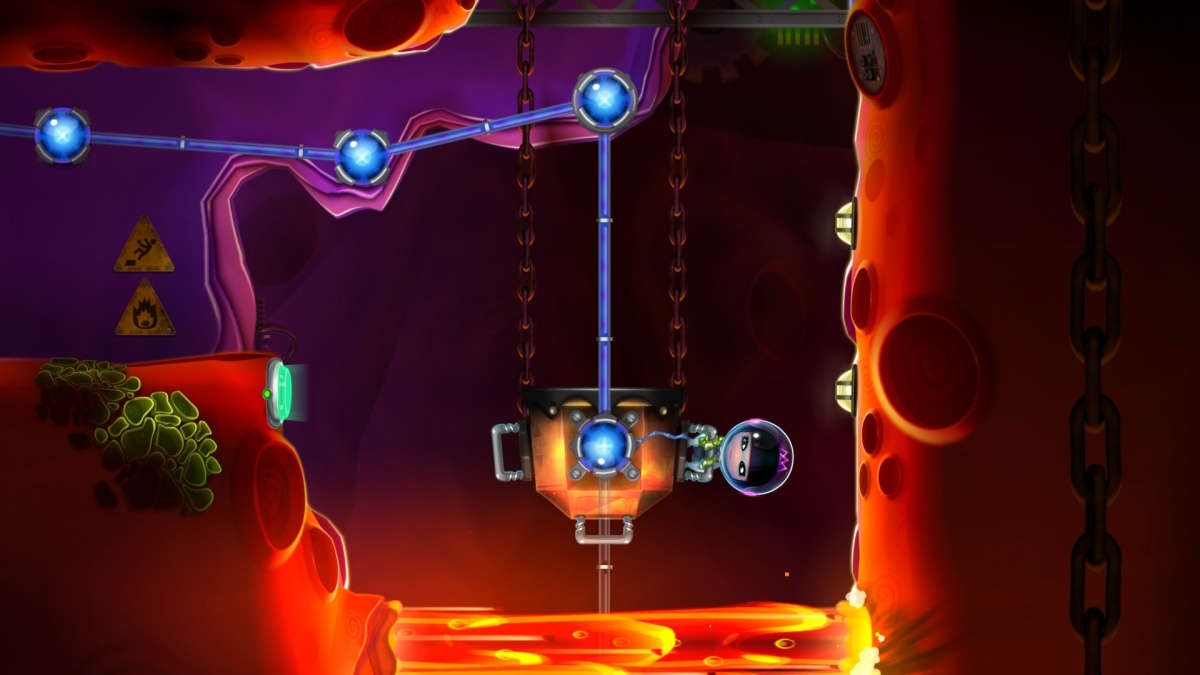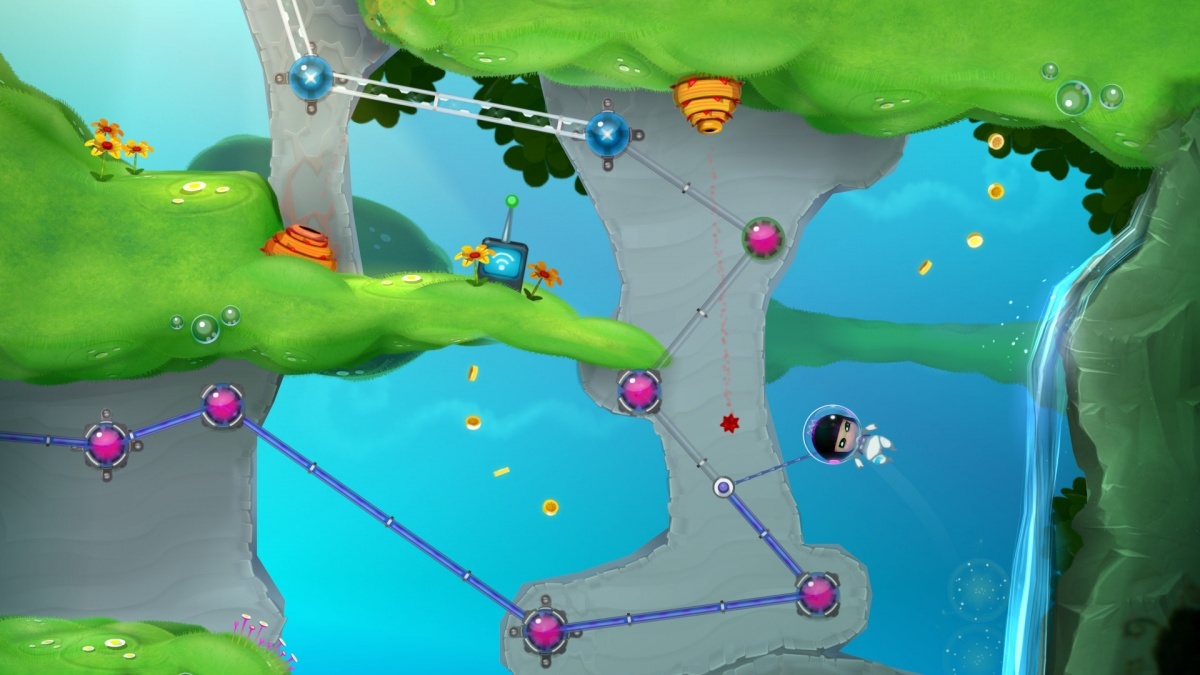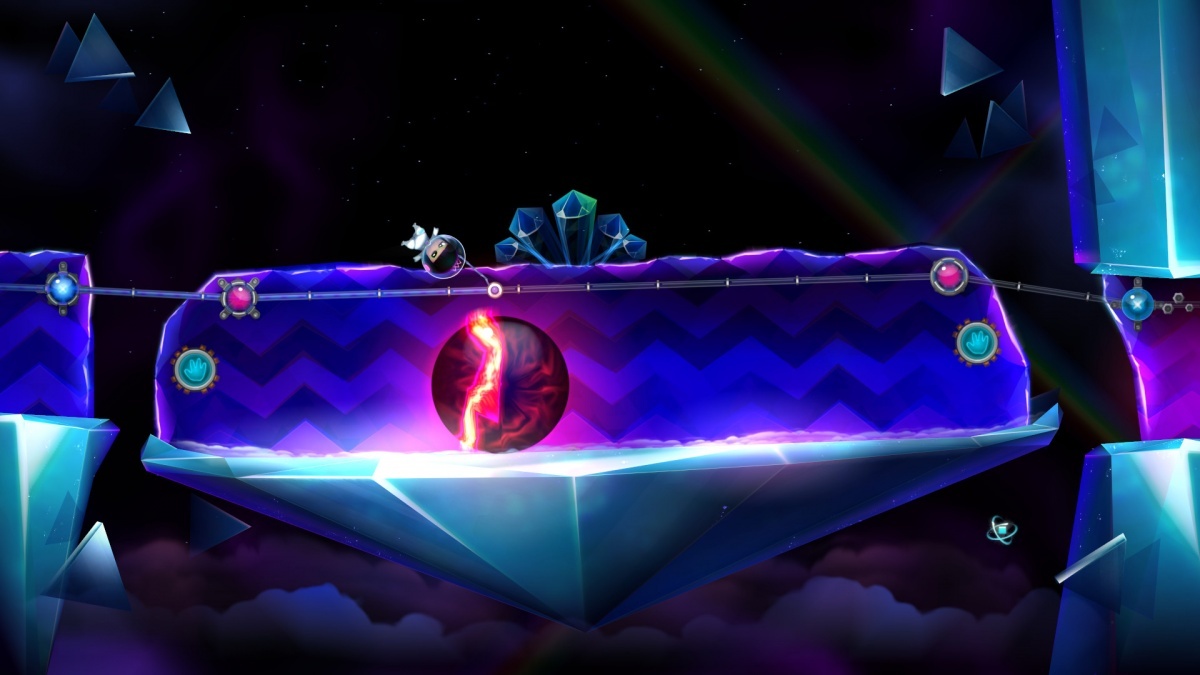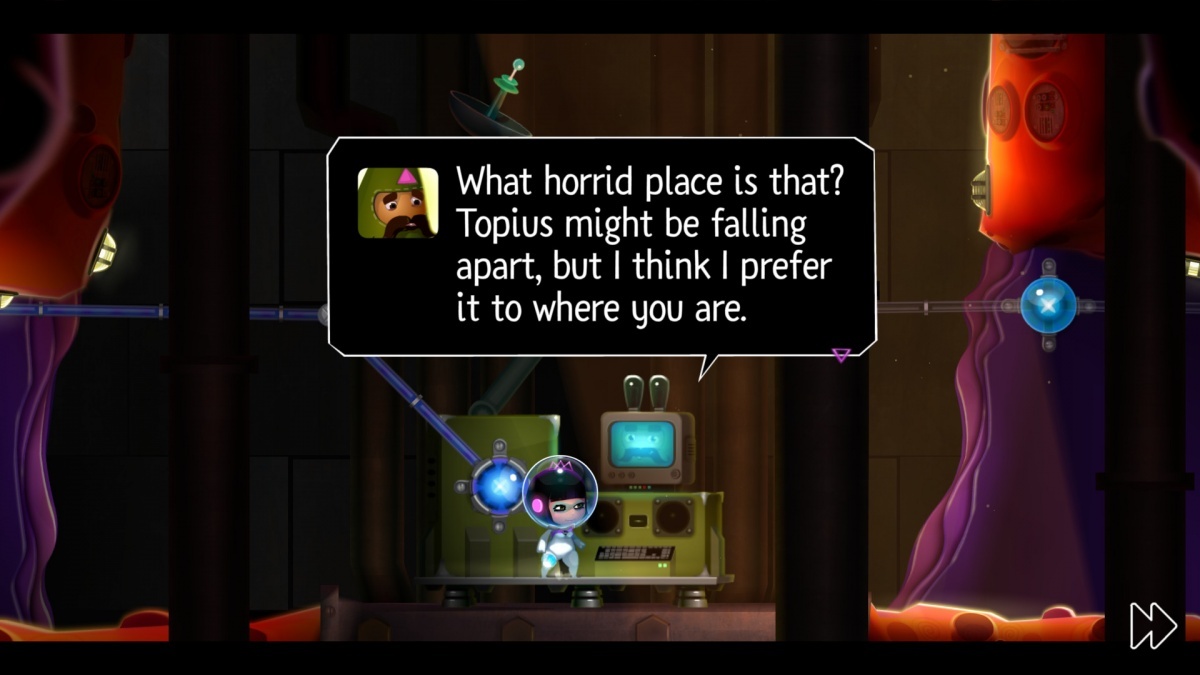Sling Ming (PC) Review
By Luna Eriksson  02.06.2018
02.06.2018

Sling Ming has everything to makes one's interest peak just by reading about it. It features creative mechanics, and an adorable art style that stands out from other cutesy games the puzzle platformer genre has been host to over the last few years due to their marketing choices. Will a game about controlling a character almost solely through a ropeway create varied and enjoyable gameplay enough to last for longer than five minutes? Cubed3 answers that question, but after enjoying the game on Nintendo Switch recently, the answer seems obvious!
It is dangerous to judge a book by its cover, yet one might very well be tempted to do so when seeing Sling Ming for the first time. It is the kind of game and concept that will either sell itself, or at least inspire curiosity, at the first glance or make people instantaneously turn away due to it being yet another game with gimmick controls solely there to cash-in on the "casual" market. Underneath this cute and initially easygoing game hides something that is going to offer challenges to players of almost all skill-levels, without excluding anyone else in the process.

The controls are simple, yet surprisingly open up much room for both creativity and skillful execution. The primary goal is to guide Princess Ming across increasingly difficult levels by using the Oxylane system, which is a sort of ropeway with a built-in spacesuit to survive heavily polluted areas, as well as space travel, which the player moves around and controls the power to bring Ming safely deeper into planets on the hunt for the crown jewels and her long lost father with, almost, only gravity as a limitation.
The concept is very nice, but opens itself up to easily being overwhelming due to how much creative freedom is given with the system. As a result, the need is put on the developer to put in challenging content, while still keeping more and less avid players hooked on the experience. Thankfully, this very point where a lot of puzzle games of this nature fail is where Sling Ming excels in a way that would even make the developers of modern great platformers, such as New Super Mario Bros., proud. It is filled with different optional challenges for players to take on, which is where the true challenge rests. These can range from anything like collecting a certain amount coins, to limitations in how much Oxyline can be used to progress.

There are not only ways to add difficulty to the game if needs be, but also very clever ways to get around it. The coins included are, unlike in most puzzle platformers, not used to unlock new tools to make things easier, but to skip stages that a player might find too difficult, or just want to return to later. The cost to do this is very steep, but the coins are farmable, so there is never anything hard locking the player from what Sling Ming has to offer, while still giving very strong incentives to at least seriously try to beat everything. It is beautiful to see a help system this well intertwined with the core mechanics and makes it feels like, even though a player skipped the level, they still "earned" access to the next stage.
The levels themselves are definitely worth the effort to unlock as well! With the amount of levels in Sling Ming and the core mechanics that might to some sound too gimmicky to make much out of, it is easy to assume this would grow repetitive fast; however, the opposite is actually true. The absolute strongest suit of the title is how it goes extremely out of its way to make each and every level, especially later on when they truly start to spread their wings, feel unique. This really puts heavier emphasis on how great the skip system is as, while a player might have a hard time on one level, they might have an easier time on the next as they are not just getting harder in the traditional sense.

The crown jewels of the experience are the boss battles, each of which feels unique and shockingly replayable just because of the fun factor they offer. It is difficult imagining something more fun than a mix of tag and soft bullet hell in a no gravity space, with Ming flying around like a glove thanks to the Oxyline system.
To go with all of this is the above-mentioned artwork that is eye-catching and has an easy time to put a smile on the face of anyone playing, but also humour that while it normally would be cringeworthy is actually spot on in the world created in Sling Ming. It is often poor meta jokes told with extreme tongue-in-cheek sarcasm that is oh-so-satisfying when done in good context with characters that can pull it off well, and Ming is one such character. She is both clever and innocent enough to be able to pull off remarks such as "Why do they always hide important keys in the farthest corner of the galaxy?" and have it be correct for whatever arbitrary reason (with the King's stupidity and lack of foresight being the main reason), and it not being cringeworthy. It shows of good writing when poor jokes like this make sense and become funny, which is impressive considering the very low amount of words included.
The only minor complaint to be found is that it falls heavily into the trap of creating levels that rely on one-time mechanics, which are both impossible to practice for, and are going to be useless for the rest of the game. As it does help with the varied level design, though, this is an easily overlooked flaw in an otherwise almost perfect puzzle platformer.

Cubed3 Rating
Great - Silver Award

If you are into puzzle-platformers, why are you reading this instead of playing Sling Ming right now? Sling Ming is an extremely creative experience, rivalling many great names in the pure enjoyment stakes, and comes with unique gameplay that is not found elsewhere. It is certainly a must-buy for all fans of the genre, no matter if people want some casual fun or rather prefer brain-teasing puzzles to keep their minds sharp.

![]() 8/10
8/10
![]() 0
(0 Votes)
0
(0 Votes)
 Out now
Out now  Out now
Out now  Out now
Out now  Out now
Out now Comments
Comments are currently disabled

 Sign In
Sign In Game Details
Game Details Subscribe to this topic
Subscribe to this topic Features
Features





 Top
Top

